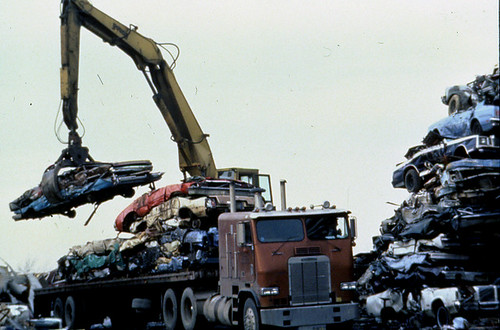California toxic waste regulators target automobile recycling ‘fluff’
(Source: LA Times)
The leftovers from car shredders have been used to cover trash at landfills, but state officials now say the practice has health risks and should be stopped. Industry officials say fluff is safe.
 At a recycling plant in San Pedro and five other similar operations around California, giant shredding machines annually reduce 1.3 million junk cars, refrigerators and other appliances into fist-sized chunks of metal.
At a recycling plant in San Pedro and five other similar operations around California, giant shredding machines annually reduce 1.3 million junk cars, refrigerators and other appliances into fist-sized chunks of metal.For years, auto-shredding companies have been hauling tons of these treated leftovers, known in the industry as fluff, to municipal landfills under a state variance granted more than 20 years ago.
State officials now say they are concerned that residue from heavy metals in the fluff could seep from landfills into groundwater, while airborne metal-laden particles could endanger workers at recycling plants and dumps and people living in neighborhoods near such facilities.
A change in state policy, if finalized, could mean that fluff may need to be transported under more strict conditions to special hazardous waste disposal sites, according to the state Department of Toxic Substances Control.


